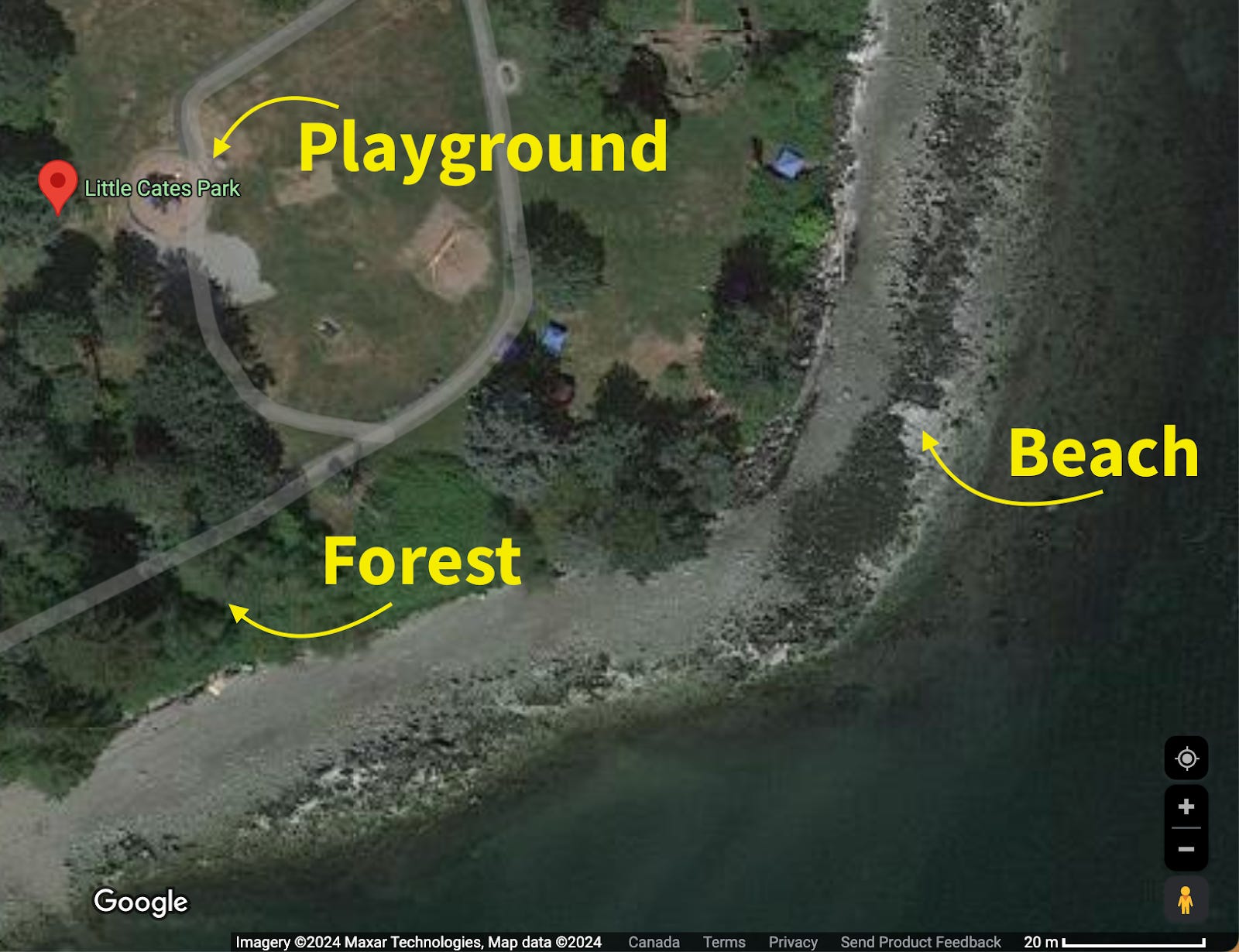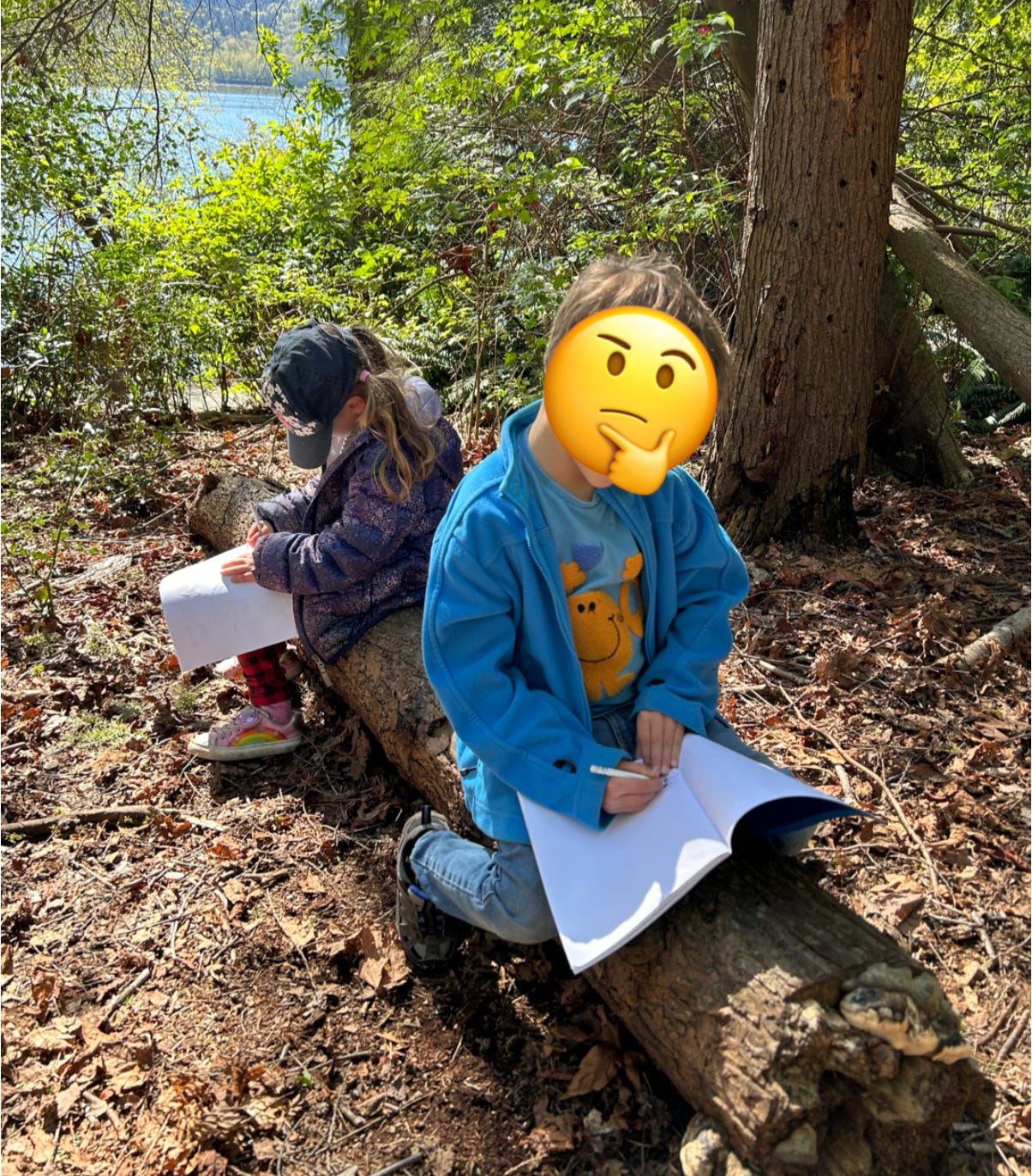Last November, we helped a giggly gaggle of Kindergarteners explore Little Cates Park in North Vancouver to capture the sounds of fall. Their teacher, Ms. Gabrielle, invited us back last week on a beautiful spring day to lead this eager group on a second round of outdoor adventuring.

We arrived on a sunny, warm morning to take part in their safety orientation – important for both students and parent volunteers! Once everyone knew the plan, we hopped into Ms. Gabrielle’s car to head to Little Cates Park where students split up into three groups, each starting at one of the three activity stations.
Nick and I managed the Forest 🌲while Ms. Gabrielle was down at the Beach 🏖️ and Ms. Altamirano, the EA, was at the Playground. 🛝

During our previous trip in the fall, we recorded the sounds of nature. This allowed the students to practice carefully recording outdoors with an iPad and provided soundscapes Ms. Gabrielle could later use in her class.
Comparing Seasons ⛅
For this field trip, the students had to make observations in their journals about the sights of springtime. We started by helping the students notice the differences in the seasons. What looks different from last time? Do you notice anything shimmering or sparkling?
Once their attention was directed towards the world around them, they settled in and began drawing, writing, and recording based on the prompt, “In springtime I see…”

Ms. Gabrielle used this activity to assess her students’ phonetic spelling and their pronunciation. Students were tasked with writing a minimum of 2 words, drawing 4 images, and recording 1 video. Students noticed and documented things like trees, flowers, sun, shadows, and grass.

For the spelling portion, the class was challenged with writing their words on their own, without any help from their classmates, parents, and teachers. This was important because Ms. Gabrielle was just interested in assessing their grasp of phonetic spelling. While some of the students learned to struggle through and sound out words on their own, it was the parents that had a more difficult time resisting the urge to correct their child’s spelling! 👪
Springtime Selfies 🐞
Using iPads, the students used their springtime prompt to record video snippets of themselves in the different environments. The result? A collection of short videos featuring students sharing things like, “In springtime I see flowers,” or “In springtime I see the sparkling water,” and “In springtime I see ladybugs.” These video selfies would later be used to compare student observations with their written spelling attempts, along with a documented example of their pronunciation ability. What a fun, hands-on way to collect evidence of learning!
Thank you for reading The Classroom Chronicles. This post is public so feel free to share it.
How Inuit Parents Teach Kids To Control Their Anger

Last week we attended the STA Pro-D Conference where the keynote speakers, The Amazing Two Spirit Couple - Dr. James Makokis & Anthony Johnson, spoke briefly about this article about Inuit parenting from NPR. It’s an amazing look at how cultural values, story telling and asking questions, can help shape a child’s behaviour and support their emotional development. A really great read!
"They never acted in anger toward me, although they were angry with me an awful lot," Briggs told the Canadian Broadcasting Corp. in an interview.
Even just showing a smidgen of frustration or irritation was considered weak and childlike, Briggs observed.
For instance, one time someone knocked a boiling pot of tea across the igloo, damaging the ice floor. No one changed their expression. "Too bad," the offender said calmly and went to refill the teapot.
In another instance, a fishing line — which had taken days to braid — immediately broke on the first use. No one flinched in anger. "Sew it together," someone said quietly.
By contrast, Briggs seemed like a wild child, even though she was trying very hard to control her anger. "My ways were so much cruder, less considerate and more impulsive," she told the CBC. "[I was] often impulsive in an antisocial sort of way. I would sulk or I would snap or I would do something that they never did."


